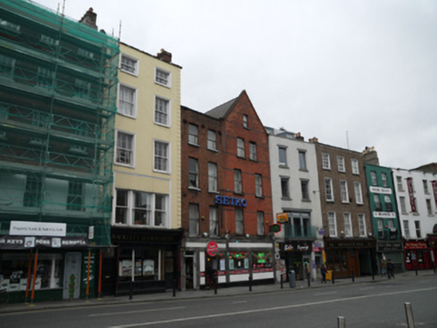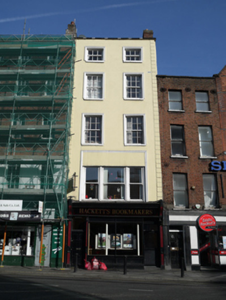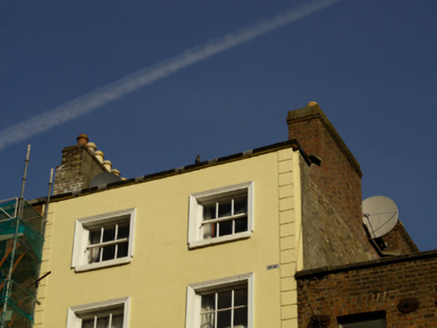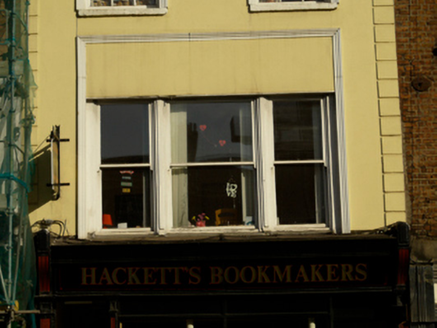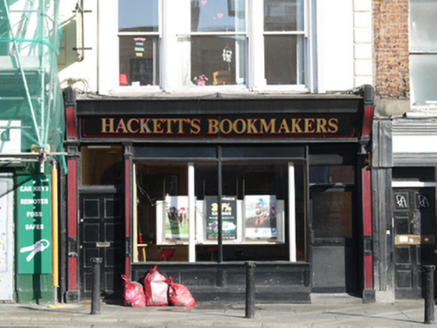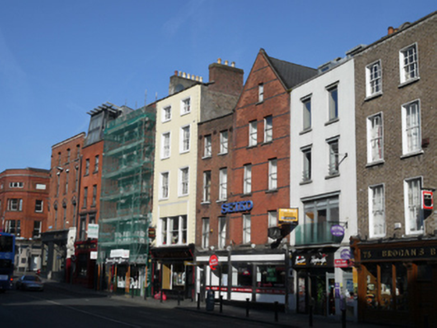Survey Data
Reg No
50020059
Rating
Regional
Categories of Special Interest
Architectural
Original Use
House
Historical Use
Office
In Use As
Shop/retail outlet
Date
1770 - 1790
Coordinates
315522, 234128
Date Recorded
22/03/2015
Date Updated
--/--/--
Description
Attached two-bay five-storey over basement former house, built c.1780, having shopfront to front (south) elevation. Now in use as shop and apartments. M-profile pitched slate roof, hipped to west, hidden behind smooth rendered parapet with masonry coping. Recently rebuilt red brick chimneystacks having clay pots. Smooth rendered wall to front with render quoins, and brown brick walls, laid in English garden wall bond, to east gable. Square-headed window openings having granite sills, moulded masonry architraves, three-over-three pane and six-over-six pane timber sliding sash windows. Tripartite arrangement of one-over-one pane timber sliding sash windows with moulded masonry architrave to first floor. Carved timber shopfront having fluted pilasters, fluted brackets to fascia and timber panelled stall risers. Square-headed window and door openings with recent fittings. Situated on north side and west of Dame Street.
Appraisal
Like many of the other buildings on the north side of Dame Street, this building maintains its graduated fenestration pattern, which creates a pleasingly balanced façade that is enhanced by good-quality nineteenth-century window surrounds. The building maintains an elegant appearance and contributes significantly to the early character of the busy thoroughfare. The first floor tripartite window arrangement adds interest to the first floor, suggesting a commercial use in the past, and is a feature commonly found on Dame Street and Parliament Street. Dame Street is derives its name from a dam which powered a mill on the River Poddle, and was of considerable importance during the eighteenth century as the thoroughfare between the Parliament House (now Bank of Ireland) and the Castle. The street was widened and remodelled by the Wide Streets Commissioners during the latter part of the eighteenth century.
